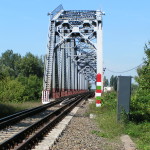Initiation of a constitutional amendment procedure in the European Union seems increasingly likely due to the positions on treaty reform of the European Parliament, the European Commission, France and Germany as well as other EU member states. The aim of the webinar is to discuss the need of reform or abolishment of the Euratom Treaty and how EU’s constitutional framework could look like if it included mechanisms for an efficient and timely green energy transition.
Time: February 20th, 3-4 PM, CET.




You must be logged in to post a comment.